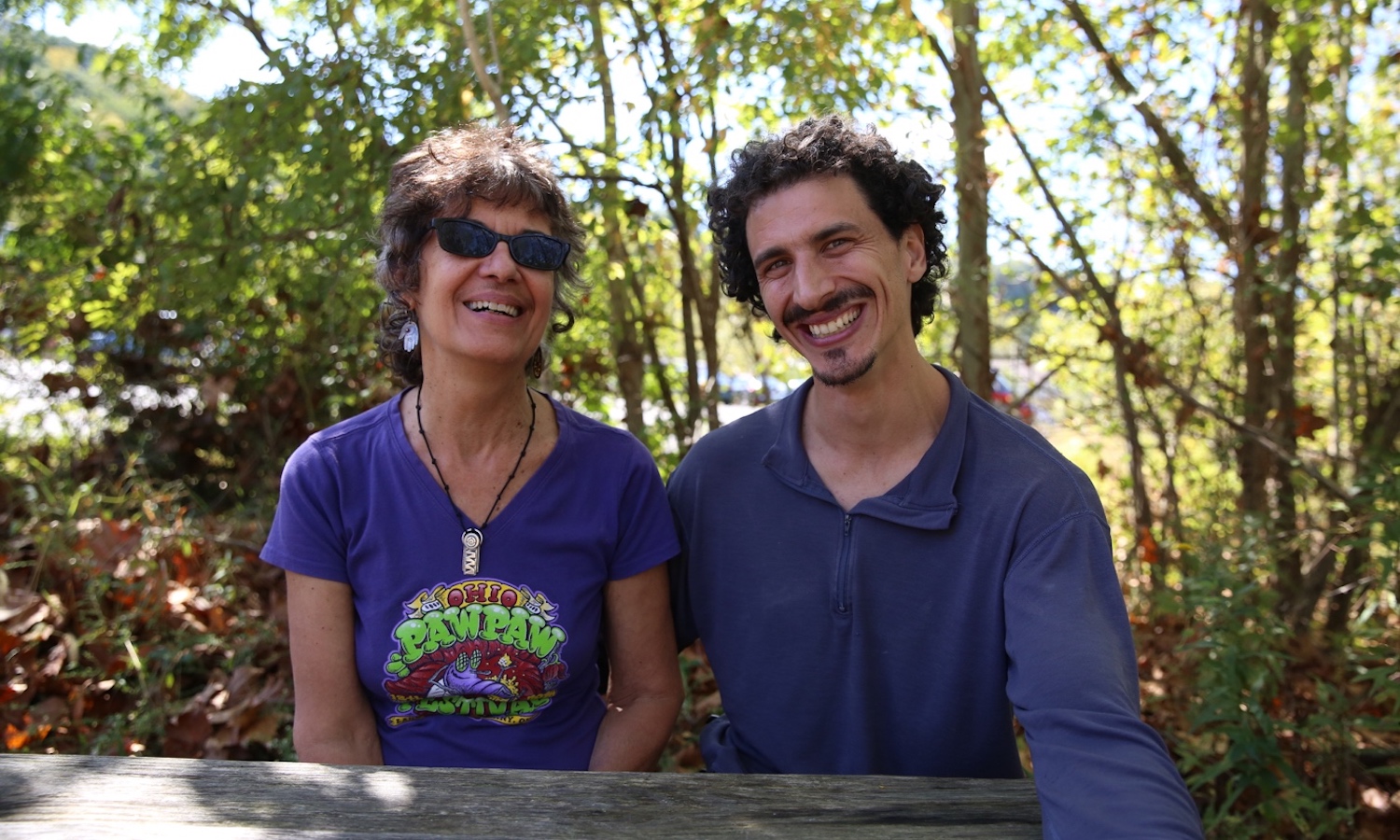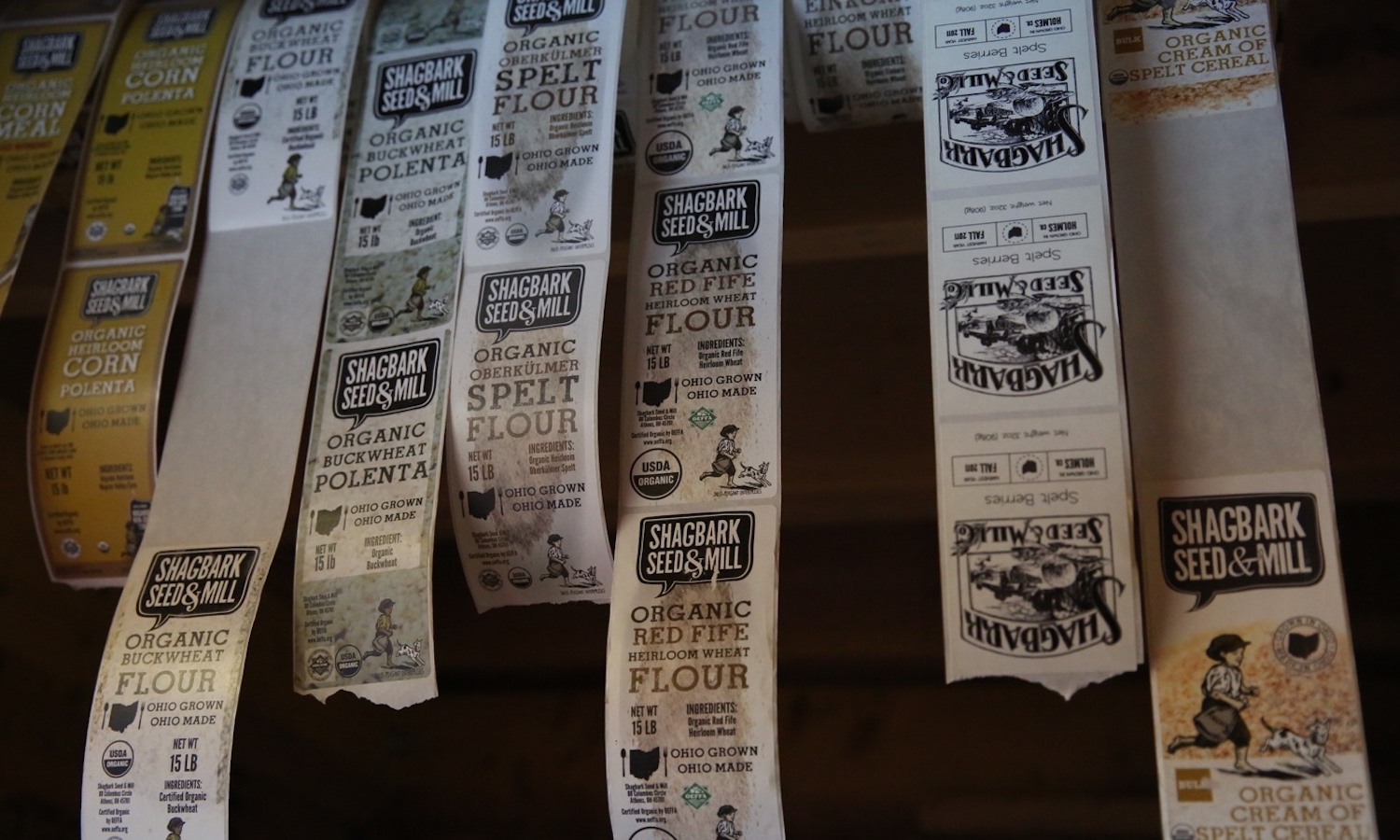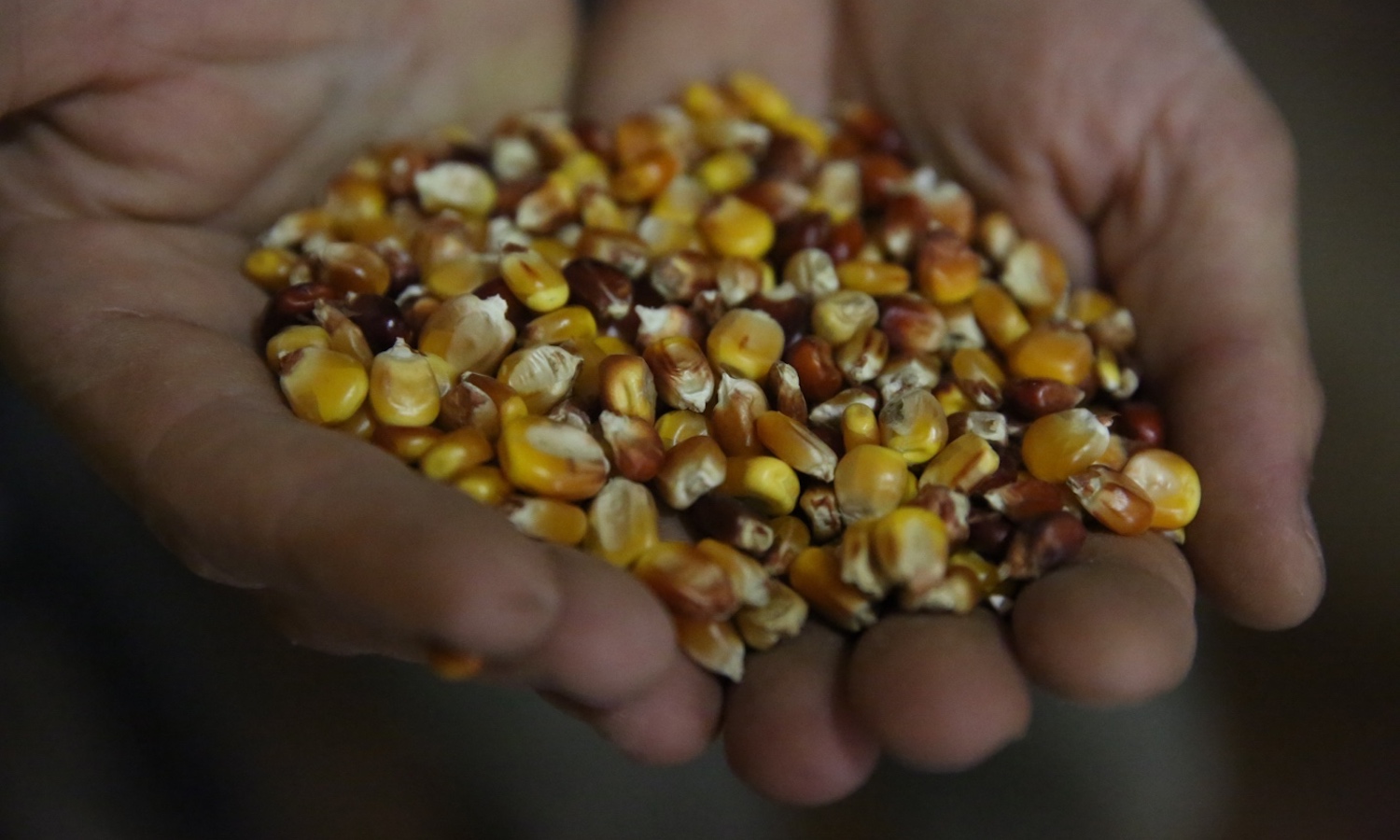Contributing Author: Emily Payne
Brandon Jaeger and Michelle Ajamian say they were driven by existential anxiety to open Shagbark Seed & Mill in Athens, Ohio. Their facility produces Ohio-grown, Certified Organic dry beans and freshly milled grains to help create a local staple food market. During the #CropsInColor in Appalachia tour, they share with Food Tank and The Crop Trust about the challenges of starting a small grain mill and why they’re not aiming to be in every kitchen in the United States.
Before opening Shagbark, Jaeger and Ajamian traveled the country visiting farmers’ markets and noticed that, despite growth in local food systems, staple foods were not represented at a local level. “All of our protein comes from [beans and grains] and a lot of nutrients, and they aren’t available locally,” Ajamian says.
“I went to the farmers’ market to get my eggs, cheese, and leafy greens, but then I went home and grabbed my cans of beans, rice, crackers, and pasta from the pantry,” Jaeger explains. “I can buy locally baked bread, but I don’t know where the flour is coming from, just like how I don’t know where all those other beans and grains come from.” And after some research, Ajamian found that even black beans in organic co-ops, for example, were often coming to Ohio from China.
The pair received a Sustainable Agriculture Research and Education grant in 2008 to test high-nutrient staple crop plots for Appalachian farmers. “We looked at all of the empty fields in Appalachia and realized they aren’t really geared to the kind of ag that’s in the corn belt. We have small, irregular plots and thin soil,” Ajamian says. Nuts and other perennials, however, grow well in the region’s unique topography and climate.
After a couple of years as growers, Jaeger and Ajamian realized that they couldn’t build a local food system without a local processing facility, and they opened Shagbark in a former carpet warehouse in 2010. Now, they say that with each passing year at Shagbark, they find more and more reasons why local and regional processing facilities for staple foods are important.

“Almost every town in the state—and most states—has a Mill Street. Mills for feed and food used to be ubiquitous, that’s how we fed ourselves.” Now, “a lot of the poverty you see can be attributed to the extraction of that economic activity, especially in rural communities,” Jaeger says.
Especially when it comes to staple foods, Americans have grown dependent on an industrial agriculture system that has been supported by decades of commodity subsidies. At Shagbark, Jaeger and Ajamian have developed a local alternative that goes against this system, seeking to restore community economies that allow people to fill all of their basic needs through producers they know. They hope this connectivity will also shine light on the consequences of eaters’ choices—and where they spend their food dollars.
But working in this high-volume, low-margin sector of agriculture has required a lot of education in the community. “No one ever talked about fresh dry beans, or freshly milled flour,” says Ajamian, so they focused on attending farmers’ markets and having face-to-face conversations with eaters and chefs when Shagbark first opened. Luckily, the Athens Farmers’ Market is one of the best in the country, she notes.
For them, consumer education also promotes heirloom crops and crop diversity, which benefit not only soil health and resiliency but the community at large. “It provides a more enriching food experience and life experience,” Jaeger explains. “The flavors, the colors, the textures, the nutrients that we may not even know about.” He feels that in the last 50 to 60 years, eaters have lost some of these experiences due to industrial agriculture’s consolidation, monocrop systems, and subsidized petroleum.
For their 17 products, Jaeger and Ajamian choose crops that they know they can market and that farmers in the area know how to grow—or can easily add to their portfolio. Right now, they source hybrid dent corn, heirloom corn, Red Fife wheat, Oberkulmer spelt, heirloom buckwheat, and beans from six Ohio counties for their hot cereal, popcorn, polenta, flour, tortilla chips, cornbread crackers, pasta, and more.
One of the most popular is the Wapsie Valley heirloom corn— for both humans and animals. According to Jaeger, many of their farmers grow the corn to feed livestock as well as save enough seed for the next year. Several farmers have shared that their pigs prefer the Wapsie Valley corn over the hybrid varieties: “they fight over every last kernel.”
Jaeger and Ajamian work with farmers who are already pioneers in the community. “We’re surrounded by farmers who are driving by, shaking their heads, and saying, ‘what are you doing out there weeding your corn crop?’” Jaeger says. “But the organic farmers are doing better and better.” And farmers working with Shagbark receive better-than-commodity prices for their product, he emphasizes.

With Shagbark, Jaeger and Ajamian are intentionally trying to stay small, “because we believe in the many values to humans for that,” Jaeger explains. “So we have the tricky challenge of figuring out what our niche is to be able to compete in that zone. We don’t want to be in homes all over the world with our product necessarily, but we can be in homes here in Ohio, West Virginia, Pennsylvania, Kentucky, and Michigan with many different products that serve people’s staple food needs.”
In filling the gap between a small, specialty niche mill and the commodity system, they also strive for education around the idea of cheap food. “We have all grown up—several generations now—with this concept of cheap food in the U.S.,” says Ajamian, and this has led to Americans valuing food less and expecting it to be cheap. It has also led to a system that allows workers to make lower than living wage, often in unfair working conditions, both on the farm and in the warehouse.
In addition to providing fair wages and working conditions for their own workers, Jaeger and Ajamian do school demonstrations with their cereals; visit local prisons for young adults to serve amaranth bars, cereal, and tortilla chips; and teach in a cardiovascular health incentive program for people with very high blood pressure and cholesterol to learn about a plant-based diet with beans. They also formed an informal network called the Appalachian Staple Foods Collaborative, which seeks to build a model for local staple seed crop systems, or the selecting and sharing of a diversity of native crops within local communities. In collaboration with the nonprofit Rural Action, Ajamian is building a website and database intended to be an international network of people working to bring back cultural foodways around grains and beans.
By exploring and taking chances on diverse grain varieties and producing their grain-based products, Jaeger and Ajamian show that an alternative way of providing staple foods to a local community is possible—one that strengthens relationships with farmers and does not depend on the industrial agriculture system. For them, Shagbark is about not only creating this local food system but fostering a richer eating experience that connects eaters to their source of food.
“I think about my relatives who are from Spain and Italy, and how my great-grandparents knew how to take a tiny little yard and grow all this food in it,” Ajamian says. “When I came to Appalachia, I felt like I was back in their yard, because people here are so resourceful and they have so much knowledge.”
For Jaeger and Ajamian, choosing to grow their food, business, and initiatives in Athens—with an already-strong local foods market and unique Appalachian values—was a no-brainer.
The Crop Trust #CropsInColor campaign sheds light on the complexities, triumphs, and surprises of crop diversity in action. In Phase II (2018–2021), #CropsInColor takes a look at 10 crops, exploring how each in its own way has become a staple in our kitchens, markets, and favorite restaurants, no matter where we live. The campaign highlights the important role that crop diversity plays in our daily lives and the need to safeguard this precious, global common good.
The Crop Trust #CropsInColor campaign is sponsored by Corteva with additional funding provided by the Oak Spring Garden Foundation. Food Tank is the media partner.
Photos courtesy of LM Salazar and The Crop Trust











